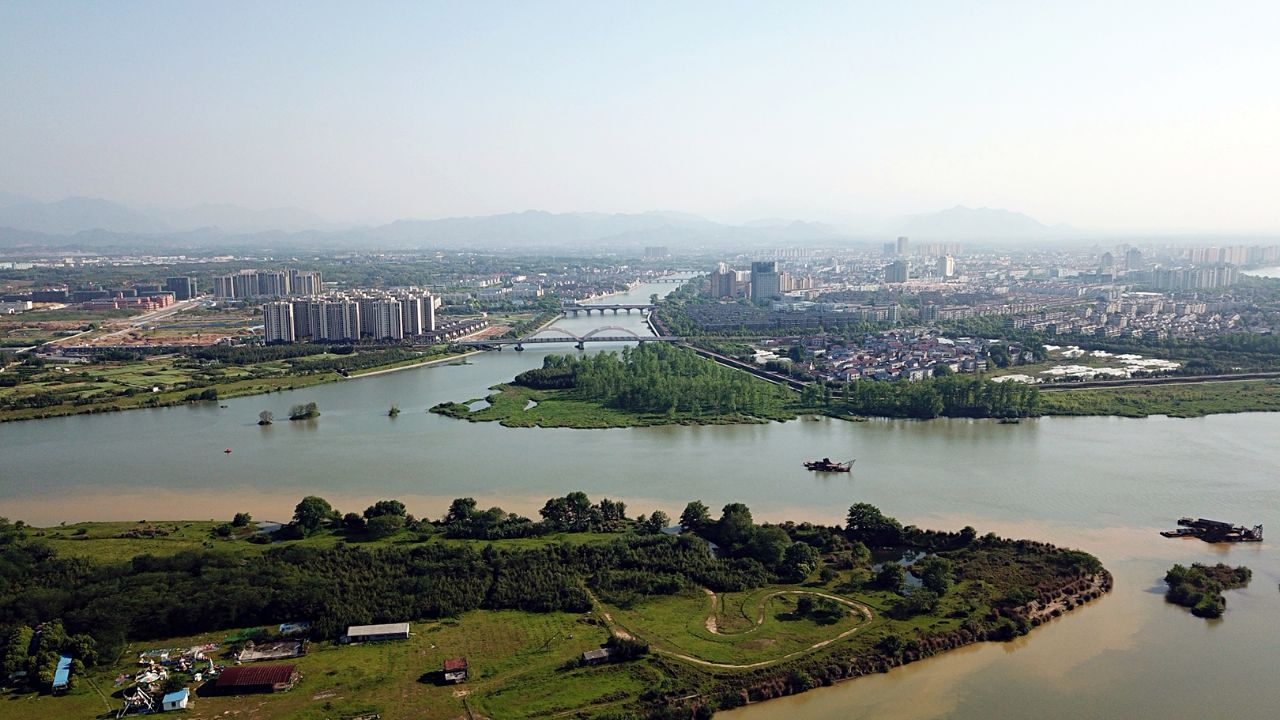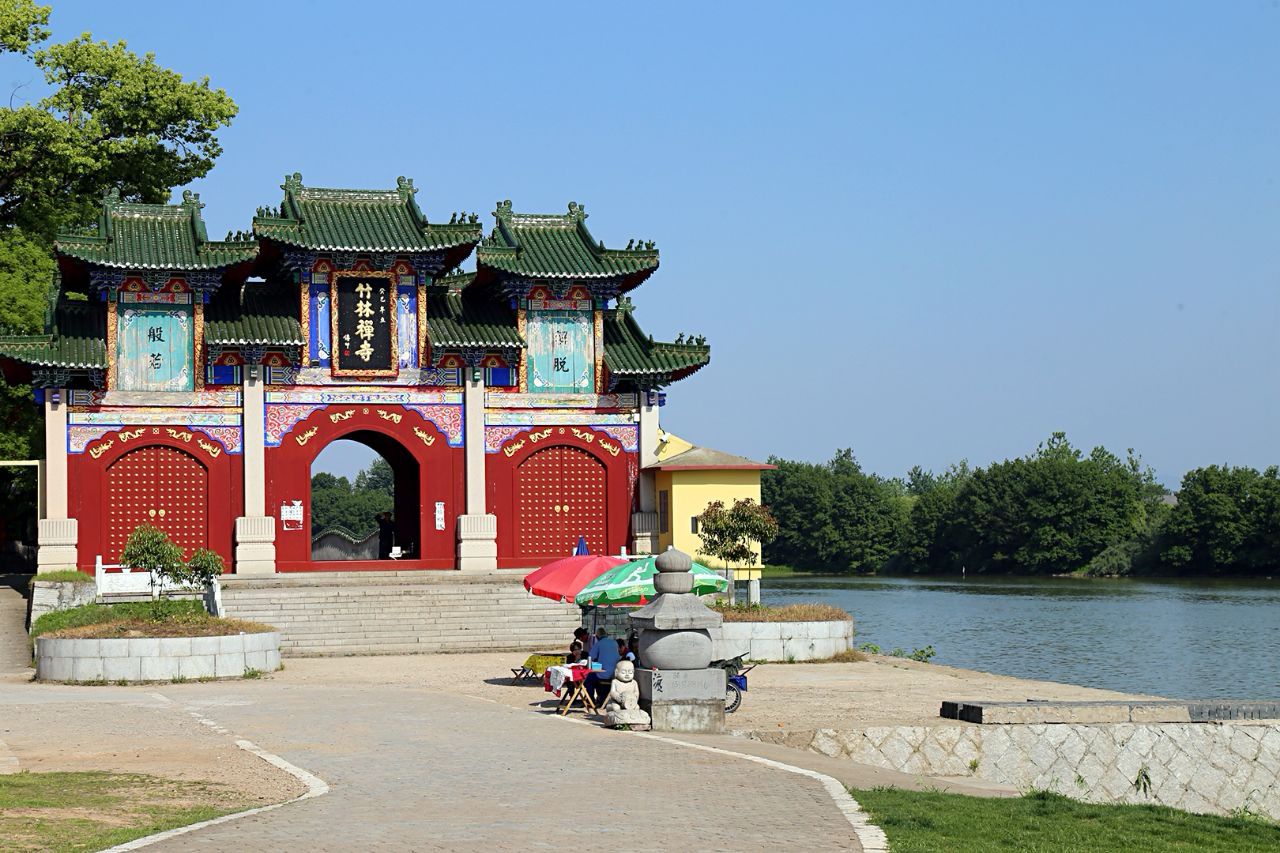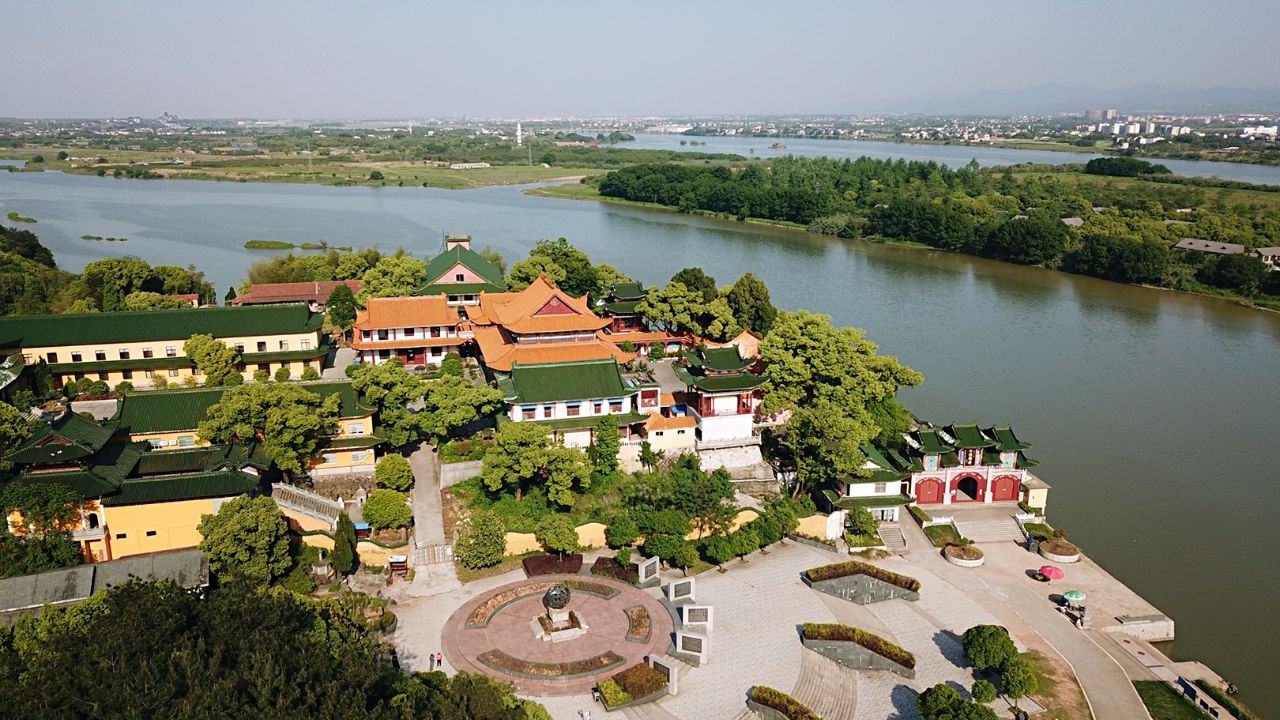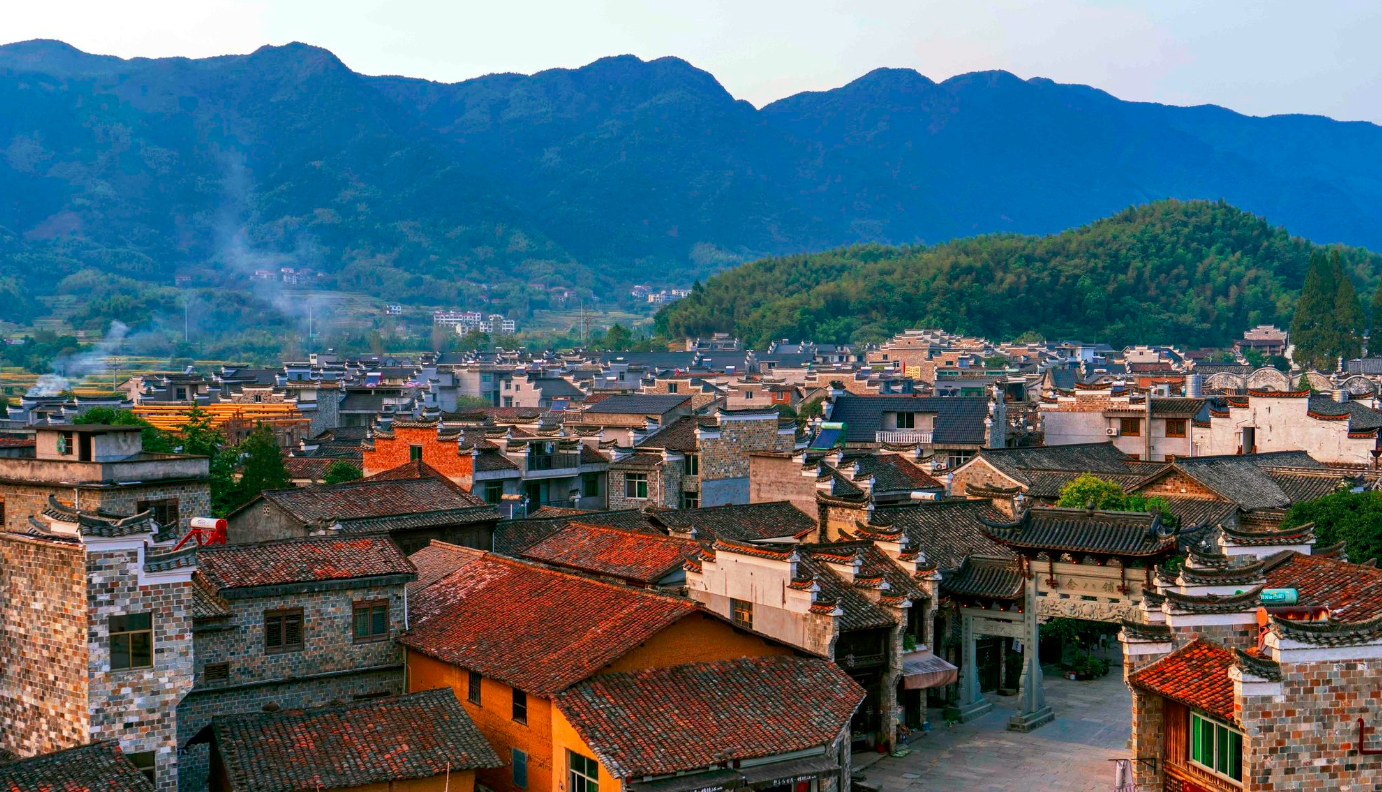Quzhou, located in the western part of Zhejiang Province, China, is a city rich in history and culture. Established in 192 AD during the Eastern Han Dynasty, Quzhou boasts over 6,000 years of civilization and 1,800 years of urban history. Known as the “Southern Confucian Holy Land,” it is the ancestral home of Confucius’ descendants and a center for Confucian culture in southern China. The city is surrounded by picturesque landscapes, including the renowned Jianglang Mountain and the scenic Qianjiangyuan National Forest Park. Quzhou also features historical sites like the restored Tianwang Tower and Wenchang Pavilion. With a population of approximately 2.55 million, Quzhou is a vibrant city that blends ancient traditions with modern development, making it a unique destination in Zhejiang Province.
1. Jianglang Mountain(江郎山)
Jianglang Mountain is a UNESCO World Heritage site located in Jiangshan, Quzhou. Known for its stunning Danxia landform, the mountain features three towering peaks that rise dramatically from the ground, resembling a giant screen. The highest peak, Langfeng, stands at 816.8 meters.
Features: The mountain is celebrated for its unique geological formations, including steep cliffs and deep valleys. The area is also rich in biodiversity, with numerous rare plant species and a variety of wildlife.
Travel Tips:
- Best visited in spring or autumn when the weather is mild.
- Wear comfortable hiking shoes as the trails can be steep and challenging.
- Bring water and snacks, as there are limited facilities on the mountain.
Transportation:
- From Quzhou, take a bus or train to Jiangshan, then transfer to a local bus or taxi to reach the mountain.

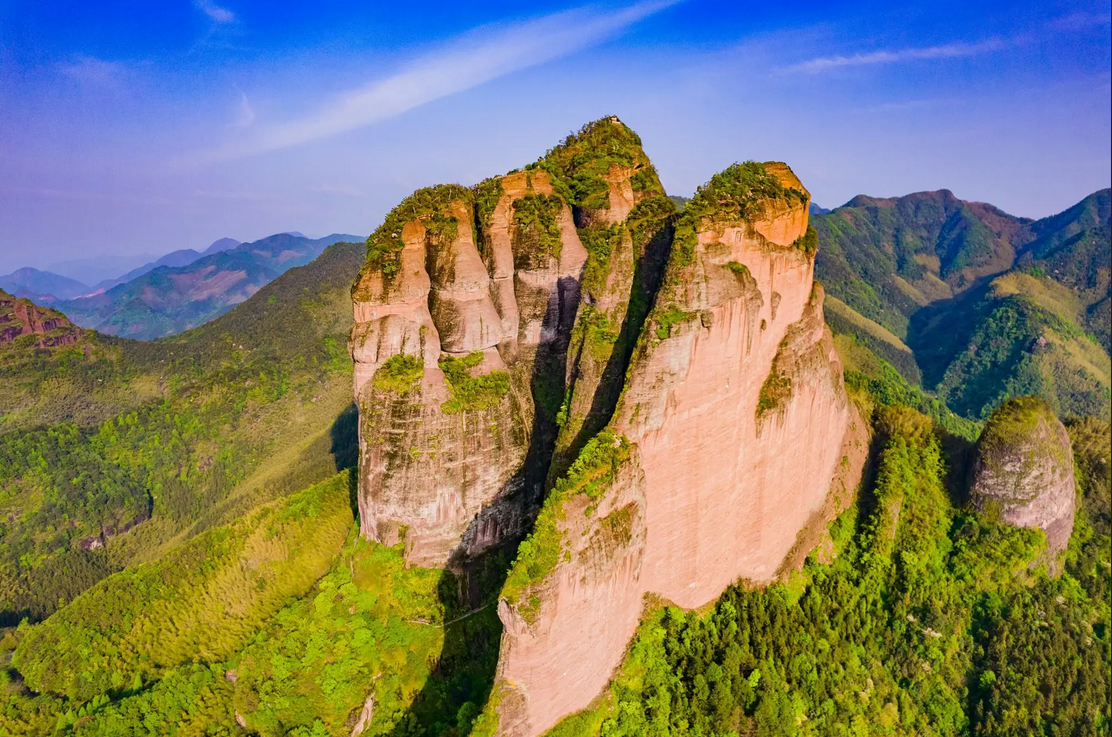
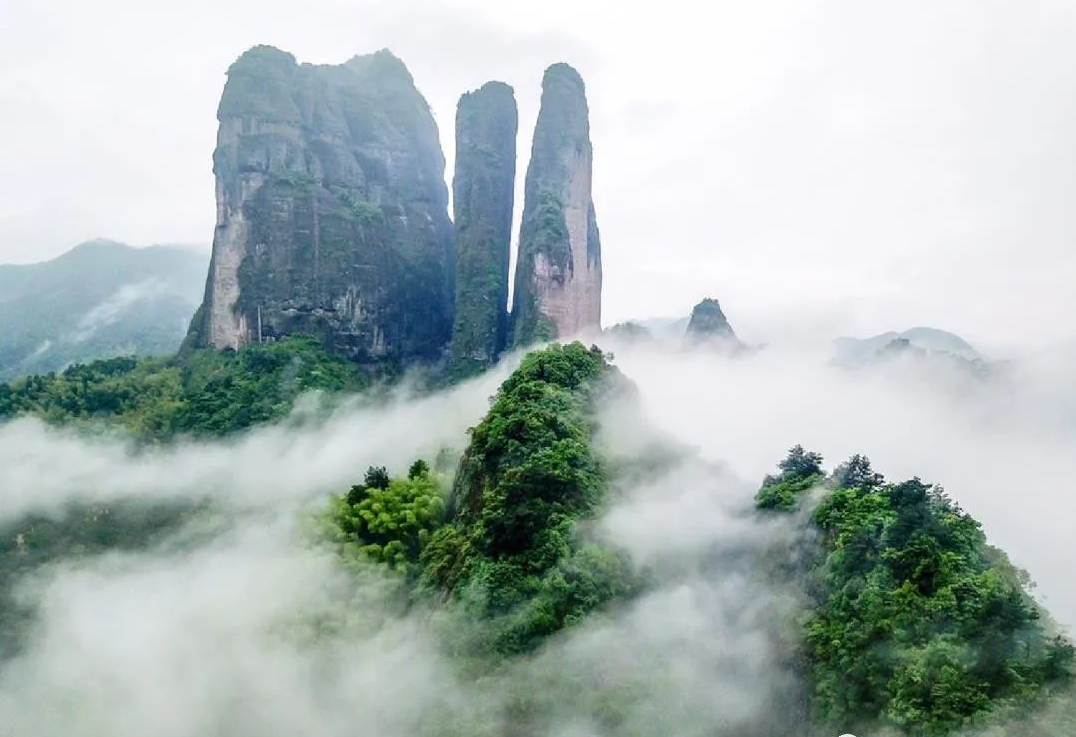
2. Nianbadu Ancient Town(廿八都古镇)
Located in the high mountains and deep valleys of Xianxia Ridge, Nianbadu Ancient Town is a historic settlement that straddles the borders of Zhejiang, Fujian, and Jiangxi provinces. The town is known for its well-preserved ancient architecture and rich cultural heritage.
Features: The town features a blend of architectural styles from the three provinces, with white walls and flying eaves. The intricate carvings and historical buildings offer a glimpse into the past.
Travel Tips:
- Ideal for history and culture enthusiasts.
- Visit the local museums to learn more about the town’s history.
- Try local delicacies at the town’s eateries.
Transportation:
- From Quzhou, take a bus to Nianbadu. The journey involves navigating mountain roads, so be prepared for a scenic but winding trip.
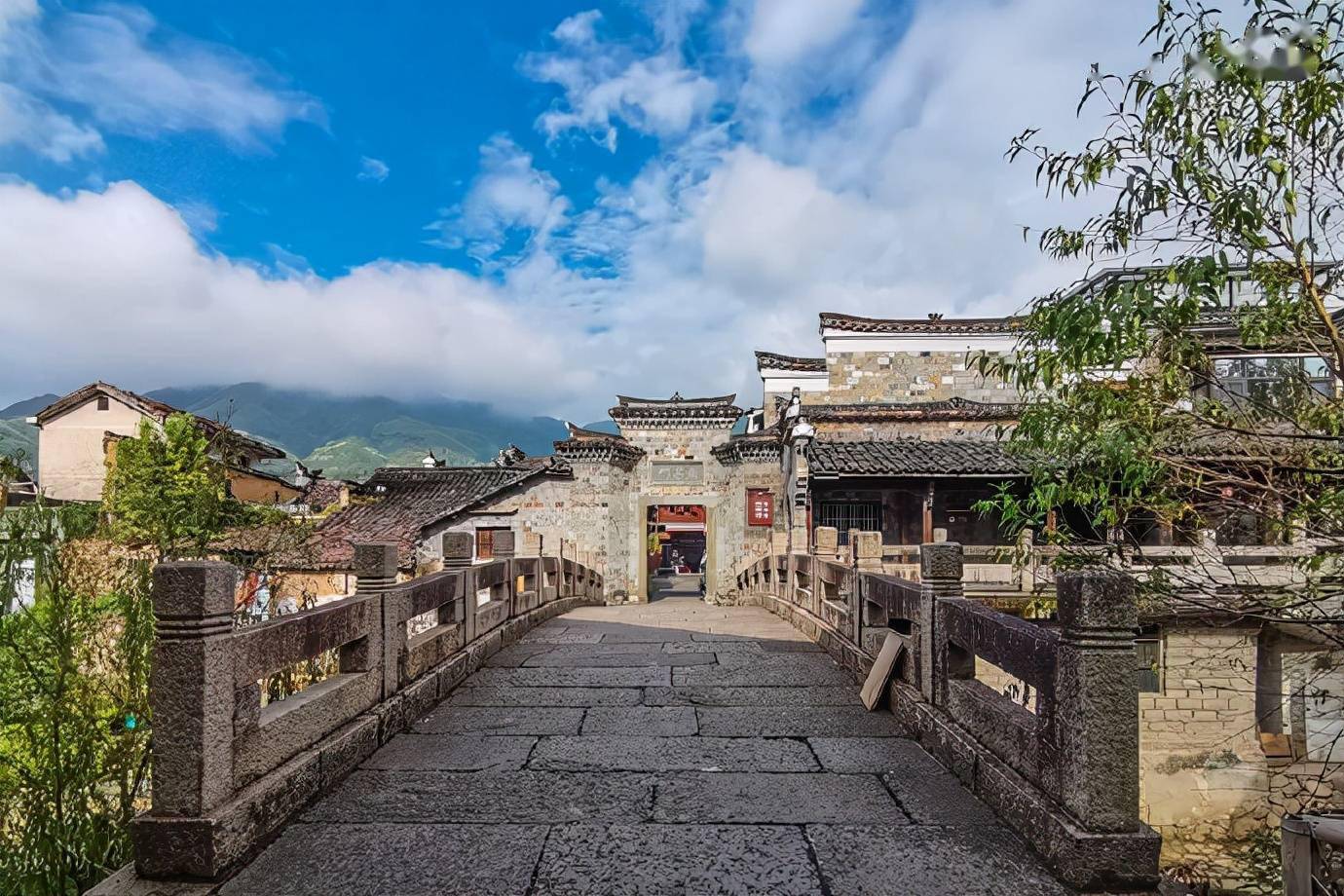

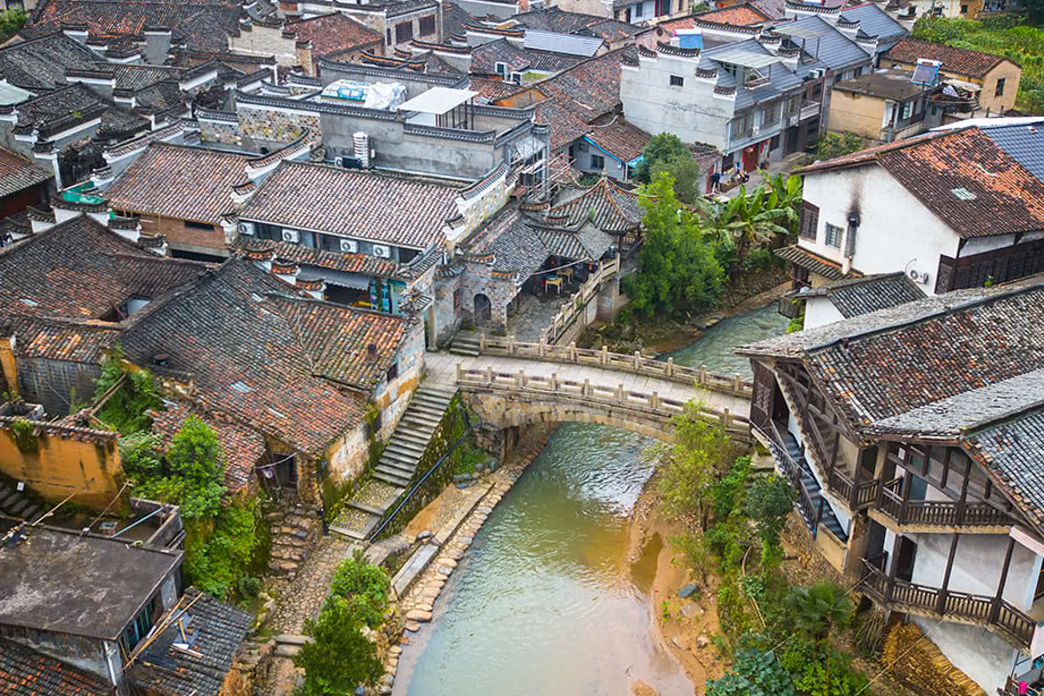
3. Longyou Caves(龙游石窟)
The Longyou Grottoes is a mysterious underground architectural complex with 24 caves spread over 0.38 square kilometers. Each cave has large stone pillars and decorative carvings, giving a sense of ancient grandeur. The site is open all day, with cave visits costing $65 for adults and free for children under 1.2 meters. Accessible by various highways, the grottoes are a 4-6 hour drive from Shanghai..
Features: The caves are known for their massive scale, precise construction, and mysterious origins. Each cave features smooth walls and intricate carvings, suggesting advanced engineering skills.
Travel Tips:
- Guided tours are available and recommended to fully appreciate the caves’ history and significance.
- The caves maintain a cool temperature year-round, so bring a light jacket.
Transportation:
- From Quzhou, take a bus or train to Longyou, then a local bus or taxi to the caves.
4. Root Palace Buddhist Cultural Tourism Zone(根宫佛国文化旅游区)
The Root Palace Buddhist Cultural Tourism Zone in Kaihua County is a unique attraction that combines root carving art with Buddhist culture. The park features intricate root sculptures and serene landscapes.
Features: The park is home to numerous root carvings depicting Buddhist figures and scenes. It also includes beautiful gardens, ponds, and traditional Chinese architecture.
Travel Tips:
- Ideal for art and culture lovers.
- Allocate a few hours to explore the park thoroughly.
- Photography is allowed, so bring a camera to capture the intricate details.
Transportation:
- From Quzhou, take a bus to Kaihua County, then a local bus or taxi to the park.
5. Tianji Longmen(天脊龙门)
Tianji Longmen, also known as Longmen Canyon, is a national forest park located in Qujiang District. The park is famous for its dramatic gorges, waterfalls, and lush forests.
Features: The park’s main attraction is the “Flying Dragon in the Sky” boardwalk, a nearly 2-kilometer-long path that winds through the cliffs and offers stunning views of the canyon.
Travel Tips:
- Best visited in summer or autumn for the best views and weather.
- Wear sturdy shoes for walking on uneven terrain.
- Bring insect repellent and sunscreen.
Transportation:
- From Quzhou, take a bus to Qujiang District, then a local bus or taxi to the park.
6. Lanke Mountain(烂柯山)
The historical significance of Lankao Mountain lies in its rich cultural heritage and the numerous famous visitors and poets who have been inspired by its beauty. The mountain has been a renowned scenic spot for centuries, attracting notable figures from various historical periods. Additionally, the legend of the boy playing chess with a traveler and the unique stone bridge on the mountain add to its historical allure.
Some of the key attractions at Lankao Mountain include the unique stone bridge, known as the “天生石梁” or “天生桥,” which is a natural bridge with impressive dimensions. The “一线天” or “One Line Sky” is another notable feature, a narrow crevice through which visitors can see a sliver of the sky. Other attractions include the “日迟亭” or “Sun Delay Pavilion,” ancient stone carvings, the “战龙松” or “Battle Dragon Pine Trees,” and the historic Ko Mountain Stone Bridge Temple. Additionally, there are various scenic spots, temples, and historical sites to explore on Lankao Mountain.
Features: The area features lush forests, clear streams, and unique rock formations. It is also home to several ancient temples and pavilions.
Travel Tips:
- Ideal for hiking and nature walks.
- Visit the Lanke Pavilion for panoramic views of the surrounding area.
- Bring water and snacks, as facilities are limited.
Transportation:
- From Quzhou, take a bus or taxi to Lanke Mountain.
7. Yaowang Mountain(药王山)
The historical significance of Mount Yaowang lies in its association with traditional Chinese medicine and renowned figures in the field. According to legend, the mythical Chinese emperor Yan Emperor (Shennong) gathered medicinal herbs in the area, leaving behind traces of his activities. Later, famous Chinese physicians such as Li Shizhen, Bian Que, and Hua Tuo also visited the mountain to collect herbs and practice medicine, leaving their own legacies. This rich history has led to Mount Yaowang being known as a sacred place for traditional Chinese medicine and healing practices.
The area is rich in natural beauty, with lush forests, diverse flora and fauna, and unique rock formations. Visitors can enjoy activities such as hiking, sightseeing, and trying local delicacies like bamboo tube rice. The area also offers discounts for children, seniors, students, disabled individuals, and military personnel.
.
Features: The mountain is covered with various medicinal plants and herbs. It also features several ancient temples and scenic spots.
Travel Tips:
- Ideal for those interested in traditional Chinese medicine.
- Guided tours are available to learn about the medicinal plants.
- Wear comfortable shoes for walking.
Transportation:
- From Quzhou, take a bus or taxi to Yaowang Mountain.
8. Xianxia Pass(仙霞关)
Xianxia Pass is a historic mountain pass located in the border area of Zhejiang, Fujian, and Jiangxi provinces. It has been a strategic military location since ancient times.
Features: The pass features ancient fortifications, stone paths, and scenic views of the surrounding mountains. It is a popular spot for hiking and historical exploration.
Travel Tips:
- Best visited in spring or autumn.
- Wear sturdy hiking shoes and bring water.
- Guided tours are available to learn about the pass’s history.
Transportation:
- From Quzhou, take a bus to the border area, then hike or take a local bus to the pass.
9. Temple of Southern Confucianism(孔氏南宗家庙)
The Confucian ancestral temple for his descendants in South China is a key cultural heritage site under national protection in Quzhou, the home of Confucius’s descendants. The temple has been rebuilt and repaired multiple times over the past 800 years. Quzhou is considered the second largest home for Confucius descendants and is seen as the origin of southern Confucian culture. President Xi Jinping has emphasized the importance of exploring and developing Confucian culture in Quzhou.
Features: The temple complex features traditional Chinese architecture, including halls, pavilions, and gardens. It is a place of worship and cultural heritage.
Travel Tips:
- Ideal for those interested in Chinese history and culture.
- Visit during cultural festivals for a more immersive experience.
- Photography is allowed, but be respectful of worshippers.
Transportation:
- Located in Quzhou city, easily accessible by local bus or taxi.
10. Xiaonanhai(小南海)
Xiaonanhai, located in Longyou County, is a scenic area known for its picturesque landscapes and historical significance. The area features a mix of natural beauty and cultural heritage.
Features: The area includes the Xiaonanhai Temple, beautiful river views, and lush forests. It is a peaceful retreat from the bustling city.
Travel Tips:
- Ideal for a day trip.
- Bring a picnic to enjoy by the river.
- Wear comfortable walking shoes.
Transportation:
- From Quzhou, take a bus or train to Longyou, then a local bus or taxi to Xiaonanhai.
